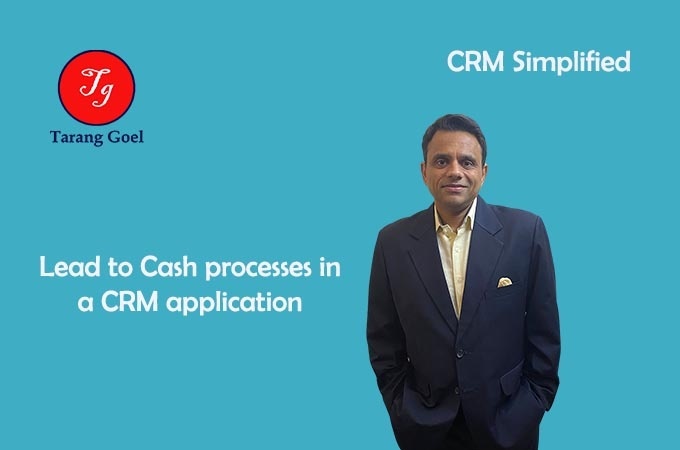Lead to Cash processes come into play when we are implementing CRM on the sales side. They outline the lifecycle of a customer acquisition and product sales including revenue and cash recognition. Lead to cash can be executed either in a single system or multiple systems depending on the scope of execution.
Here are the processes involved in lead to cash.
Lead to Cash can be described as follows:
Lead→Opportunity→Quote→Contract→Order→Shipping→Invoice→Cheque/Cash
Lead- Lead is a primary bit of information about a prospective customer. For e.g. Lead could be just a business card. This prospective customer is often known as a prospect. In CRM system this can be modelled either only as a Lead (in a Lead table or an object) or a Lead and an Account with type =’Prospect’. In salesforce generally a Lead is sufficient.
Opportunity– When further investigation is done on the prospective customer and more information is gathered about the Lead and the opportunity to sell is high then Lead is converted into an Opportunity. At this stage an account type = ‘prospect’ becomes a must. If this prospect is a Business to Business customer then a contact is also required and created and if this prospect is an individual then a contact is not required. In Salesforce this individual is represented by a person Account.
Quotation– We have all received quotations from different sellers. After the opportunity is created and the prospect gets interested in some products then a quote with the prices of the products is created along with current availability and proposed delivery dates and other necessary information. Quotation also has an expiry date beyond which the quotation expires.
Contracts– Once the quotes are accepted and if it is a long term continuing sale then generally contracts are created. Contracts have an expiry date, renewal process and terms and conditions of sale. Contracts are also created in case services are sold and are agreed upon to be bought in a specific period or at regular intervals. Contracts also have billing conditions and time.
Orders– Once the contract is in place then orders are created to track the agreed upon quantity and price. Order has the agreed price, taxes, delivery date, address of the customer where the products have to delivered and other terms and conditions.
Shipping – Once the order is placed then the products have to be shipped. The process of procuring ordered products from a company’s plant or an external supplier, testing, packing and shipping to the customer is called order fulfilment. This process is not usually implemented in a CRM system. For e.g. Salesforce does not have a shipping module. It has to be integrated to an ERP system for order fulfilment.
Revenue– Once the order is created, products are shipped and received, customer pays by cheque, electronic transfer or by cash/credit. This revenue has to be recognized as received and a receipt has to be issued to the customer. This process happens in the financial module of an ERP system.
The process of creating the quote for a more complex product and then pricing the product is called CPQ (Configure-Price-Quote). I will talk about it another blog.
Along with the above mentioned processes there are useful reports created at each level and a lot of effort is spend on analytics. I will talk about the reporting for Lead to Cash processes in another blog.
I hope I am able to simplify the Lead to Cash processes for you. Your likes, share’s and comments will motivate me to keep writing.


0 Comments